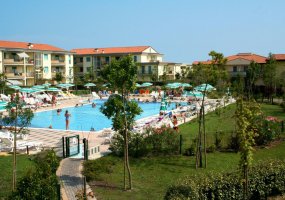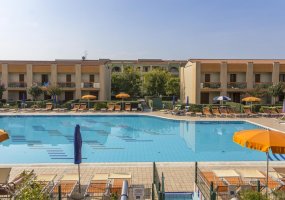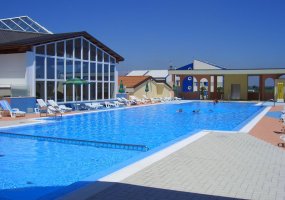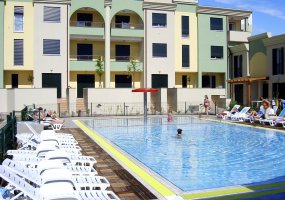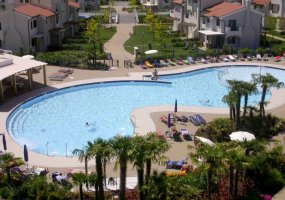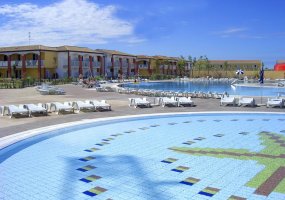The Altanea area, in the past, was a slightly raised territory, crossed by dunes, behind there was the ancient course of water of the river Livenza, which flowed to the southwest side, while the current mouth is in the nearby Porto Santa Margherita.
It was never very anthropized as all the territory behind the coast (Pinetus Maior and Pinetus Minor), formerly a lagoon, was transformed, over the centuries, following the alluvial contribution of rivers in unhealthy soils and swamps.
There were however in time various frequentations as witnessed by Giacomo Filiasi in the book "Memorie storiche De' Veneti Primi E Secondi" of 1797: "in his time, there were many ruins scattered around the Caorle shores, and this was at the end of the fifteenth century. They say they still find some traces on the beach of Altanea".
There was also the port of the Bishops of Ceneda (the ancient name of Vittorio Veneto) who erected a church in the 16th century (by the bishop Girolamo Righetto).
The current extreme border of the diocese of Vittorio Veneto still reaches the sea where once was its port of Valle Altanea.
About the port writes Trino Bottani in his "Saggio di storia della città di caorle" of 1811: "Porto Sessola, nominated from Ughello in the sacred Italy, and by Bonifazio in the history of Treviso Port Settimo. It seems that as the subsequent from the year 1109 it served to the traffic of the continental neighbor, and that it belonged to the Bishops of Ceneda, as wrote by some ancient documents. At the present it is almost underground, and has communication with the Valle d'Altanea which serves for the montada of fish, and drainage to the waters. In ancient times a branch of the Livenza descended in it ".
He adds: "Porto Altanea, called also Ottonea, named by the Ughello Porto Villano, in which also flowed a branch of Livenza. It is completely buried because of the valleys, which were made in that vicinity after the confiscation of the Caorle lagoons".
The draining of the marsh began in these areas just before the First World War, continued between the two wars and completed by Dr. Giorgio Romiati between 1950 and 1965. After having dried up the approximately 500 hectares of Valle Altanea, the first works of soil tilling started (1964) and the first crops were made. A modern zootechnical center was then built for cattle breeding, milking, milk refrigeration and forage preservation by cold air drying.
The reclaimed valleys were populated by peasants from the Padova and the Treviso area, which still today in Caorle (headquarter of the traffics to and from the Holy Land under the Venetian Republic) people speak a pleasant Venetian dialect, while in the surrounding area there is a mixture of various Venetian dialects.
Where once the plain extended, today a modern tourist center has been built offering tourist homes with swimming pools and large green areas, comfortable pedestrian and cycle paths that connect the various structures to each other and to the beach.

